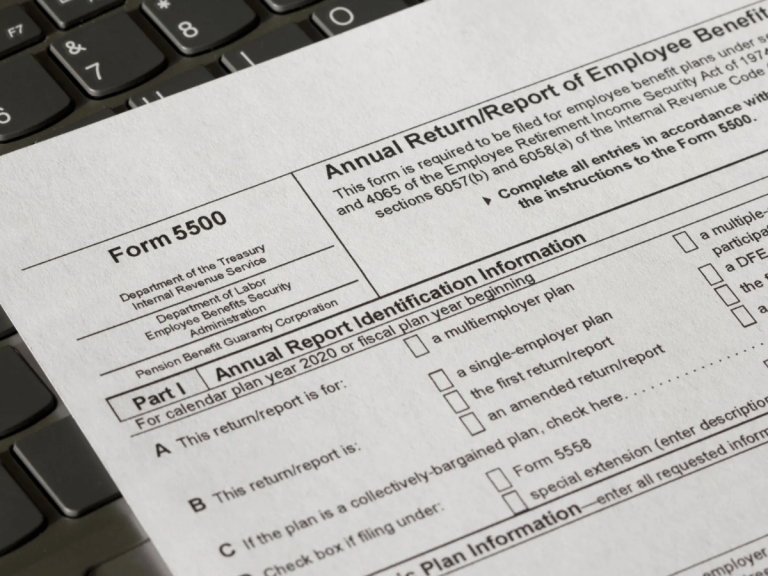Fiduciary Checklist for Retirement Plan Sponsors
NATE MOODY, CPFA®, RETIREMENT ADVISOR
May 2023
As a plan sponsor, you have a fiduciary responsibility to act in the best interests of your plan and its participants. This responsibility can be complex and time-consuming, but it is essential to ensuring that your plan is operating effectively and efficiently.
To help you fulfill your fiduciary responsibilities and manage your retirement plan appropriately, we have compiled a list of best practices for plan sponsors. By implementing these practices, you can help minimize your fiduciary risk, improve plan outcomes, and demonstrate your commitment to acting in the best interest of your plan participants.
From understanding and following plan documents to conducting regular plan reviews and benchmarking, these best practices can help you navigate the complexities of retirement plan management and achieve your organization’s goals. Whether you are new to sponsoring a plan or looking to improve your existing plan, these practices can help you make informed decisions and provide high-quality benefits to your employees.
1. Establish and document a fiduciary committee and formalize its charter
An established fiduciary committee with a formal charter can help ensure that fiduciary responsibilities are clearly defined and understood, which can minimize the risk of legal challenges. Regular meetings and documentation of committee activities can also help demonstrate compliance with fiduciary obligations.
- Review every three-to-five years or as needed

2. Establish and maintain an investment policy statement (IPS)
An IPS is a critical document that outlines the plan’s investment objectives, guidelines, and procedures. It serves as a roadmap for the plan’s investment decisions and helps ensure that they are consistent with the plan’s goals and risk tolerance. The IPS should be reviewed regularly and updated as needed to reflect changes in the plan’s investment objectives or market conditions.
A retirement plan advisor can provide guidance on developing and maintaining an effective IPS, as well as conducting regular reviews to ensure that the plan’s investments are in line with the IPS.
- Review every three-to-five years or as needed

3. Understand and follow plan documents and all applicable laws and regulations
Plan sponsors have a legal responsibility to follow the plan documents and all applicable laws and regulations. Failure to do so can result in legal liabilities and penalties. Regular reviews of the plan documents and compliance with the laws and regulations can help minimize these risks.
- Review annually or as needed
4. Provide fiduciary training to all plan fiduciaries

Providing fiduciary training to all plan fiduciaries can help ensure that they understand their fiduciary responsibilities and are equipped to make informed decisions on behalf of the plan and its participants. Regular training can also help keep fiduciaries up-to-date on changes in laws and regulations that may impact the plan. By providing fiduciary training, plan sponsors can demonstrate their commitment to fulfilling fiduciary responsibilities and minimizing the risk of legal challenges.
- Review annually or as needed
5. Monitor investment performance and conduct regular due diligence
Plan sponsors have a fiduciary responsibility to monitor plan investments and ensure that they are appropriate for the plan and its participants. Regular review of investment performance and due diligence can help identify potential risks and ensure that the plan is offering a well-diversified and appropriate investment lineup. Investment recommendations should be in accordance with the plan’s IPS. In addition, additional due diligence may be required on the plan’s Qualified Default Investment Alternative (QDIA) and Cash-Equivalent Analysis.
- Review at least annually

6. Monitor investment performance and conduct regular due diligence
Plan sponsors have a fiduciary responsibility to ensure that plan fees and expenses are reasonable and necessary. Monitoring fees and expenses regularly can help identify potential cost savings opportunities and ensure that fees are transparent and equitable. Conducting regular RFPs and fee benchmarking can help ensure that the plan’s service providers are providing high-quality services at reasonable prices. This can help minimize plan expenses and improve participant outcomes. Additionally, RFPs and fee benchmarking can help ensure that service providers are fulfilling their contractual obligations and meeting industry standards.
- Review at least annually
7. Maintain accurate and complete plan records
Plan sponsors are required to maintain accurate and complete records of all plan-related activities. This documentation can help demonstrate compliance with fiduciary obligations and provide a clear record of plan activities that can be used in the event of an audit or legal challenge.
- Review annually or as needed
8. Document all plan-related decisions and actions

Documenting plan-related decisions and actions can help demonstrate compliance with fiduciary obligations and provide a clear record of plan activities that can be used in the event of an audit or legal challenge.
- Review annually or as needed
9. Conduct periodic plan reviews and benchmarking
Conducting regular reviews of the plan can help identify potential issues and ensure that the plan is performing as intended. Benchmarking against industry standards can help ensure that the plan is competitive and offering appropriate benefits.
- Review annually or as needed
10. Ensure that participants receive proper education and communication about the plan
Providing education and communication to plan participants can help ensure that they understand their plan benefits and how to make informed decisions. It can also help minimize confusion and administrative issues that can arise when participants are not properly informed.
- Review annually or as needed

At the end of the day, your retirement plan is a critical component of your employees’ financial futures. By following these best practices and working with an experienced retirement plan advisor, you can help ensure that your plan is operating effectively and efficiently, and that your employees are on the path to a secure retirement.
Our team of retirement plan advisors is here to help you implement these best practices and provide ongoing support and guidance. From conducting regular plan reviews and benchmarking to conducting fiduciary training and service provider RFPs, we have the knowledge and experience you need to manage your plan effectively.
Contact us today to schedule a consultation and take the first step towards effective retirement plan management. Together, we can help you achieve your goals and provide high-quality benefits to your employees.
This document is for informational purposes only, you should not construe any such information or other material as legal, tax, investment, financial, or other advice. All information is based on sources deemed reliable, but no warranty or guarantee is made as to its accuracy or completeness.







